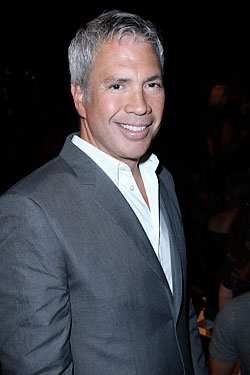
Wednesday, February 24, 2010
The Organizational Strategy

Tuesday, February 16, 2010
Fashion Emergency! Are You Prepared?

 Understanding the that fashion industry, like any other industry is prone to various crises, it is clear that the Jacobs PR department must get more information into all potential risks to the company and develop strong guidelines on how to react to them. When crises have occurred in the past, representatives for the company have been hesitant to comment or release statements. This is not a very effective way to contain and minimize the damage of a crisis.
Understanding the that fashion industry, like any other industry is prone to various crises, it is clear that the Jacobs PR department must get more information into all potential risks to the company and develop strong guidelines on how to react to them. When crises have occurred in the past, representatives for the company have been hesitant to comment or release statements. This is not a very effective way to contain and minimize the damage of a crisis.
Had the company prepared for potential crises and drafted a crisis management plan, they would have had more success in protecting the image of the brand. As Marc Jacobs has seen, it is possible for a crisis to occur in any industry, fashion included, and it's time for major fashion houses to step up and prepare for the inevitable fashion emergency.
Wednesday, February 10, 2010
New Media Creating a Crisis
For example, when Duffy released several top executive phone numbers on his twitter page, the company faced an extreme overflow of calls that they were unprepared to deal with. This not only compromised the time of the companys executives, but also tied up their phone lines and prevented important phone calls from getting through. Although this may not seem like an extreme crisis, it proved to be detrimental to the fashion house.
This examples goes to show that no matter how much you may want to, you cannot control what people choose to post on the internet. Although Duffy probably did not think much of it at the time, he created a minor crisis for the organization through the use of his social media page.
To check out Duffy's twitter page, click here!
Wednesday, February 3, 2010
Get Started Before It's An Issue - Crisis Prevention
A crisis is any situation that may effect a company's image, reputation, or integrity and must be dealt with quickly. The best way to deal with whatever crisis may come your way is to prevent it. By developing a strategic approach to crisis prevention, a company can ensure that the come out of the situation in the best way possible.
Most crises have clear warning signals, and by researching and understanding the potential threats to your organization, you should be able to deal with a crisis quickly and effectively. In my previous post I discussed how fashion powerhouse Marc Jacobs could face a crisis caused by either internal and external factors. If left alone, many of these factors I mentioned such as the failing economy and selling of counterfeit Jacobs goods, could potentially turn into crises for the company.

Because Marc Jacobs is such a well-known and sought after fashion line, it is important for the company to have a strong crisis prevention plan in place. The need for crisis prevention was clear when the Marc Jacobs name was dragged through the mud in a 2008 bribery scandal. While it was not reported that the company knew about the use of bribes to attain the Armory for their show during the 2008 New York Fashion Week (the space was booked through an outside agency), they received a lot of bad press on the issue. Even after the news broke, Jacobs did not issue any statements and refused to comment when asked about it. Had Marc Jacobs assesed the potential risks to allowing a different agency to book their venue, they may have avioded being involved in the scandal at all.


